Tag: Virginia wine
If we’re winter pruning, then Spring must be close
Maintaining a vineyard is a year-round enterprise. Even in the winter, after the vines go into a dormant state, there’s work to be done. In fact, dormant winter pruning is among the most time-consuming work of the year, and some of the most important as well, since it involves decisions that will affect not just the coming season’s growth, but the year after as well.
Most of the objectives of dormant pruning fall under the heading of “balance.” Vines will grow just fine on their own, with no pruning at all, but most of their energy will go toward producing shoots and leaves, rather than grapes. Absent any intervention, the vines will continue to grow skyward for so long as they can find support. The whole purpose of a trellis system and the pruning decisions that go with it are to force the vine to direct its energy toward the production of high-quality fruit rather than vegetative growth.
So we’re looking for balance as we decide which shoots and how many buds to retain. Prune away too much and the vine will be undercropped, producing less fruit than it can reasonably support. Prune away too little and it will be overcropped, producing a profusion of leaves and shoots, as well as an abundance of fruit that is destined to be of low quality.
During the growing season, we’ll drop some fruit from the vine, again to direct energy toward the remaining clusters in the hopes of producing more concentrated and higher-quality grapes. But the first decisions we make that will determine the quantity and quality of the season’s fruit are those made in the dead of winter.
Which is to say, when it’s cold outside. Really, really cold. Not to mention snowing every few days or so. (Or maybe it just seemed that way this winter.) Which is one of the reasons we’ve put off pruning.
The other, more noble reason for delaying our pruning, has to do with timing. It’s better not to prune too early in the season – the untouched vines will survive a cold spell much better than those that have been pruned back, and by waiting, you’ll have more options in the case of a late freeze that damages buds and shoots.
It’s helpful to be able to assess the vine late in the winter for cold injury before deciding which canes to remove and which few to retain. In our little hobby vineyard, we have the luxury of delaying for almost as long as we want to start dormant pruning. Commercial vineyards that have acres of vines to prune, don’t have that luxury. They need to start early enough to be able to finish the job before budbreak. But many vineyards employ a technique of double pruning, going through once early in the winter to trim away the shoots they know won’t be used, and returning later to finish up the job.
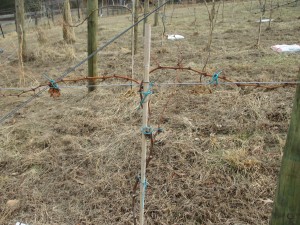
This cane-pruned vine is finished on the left arm, only partly done on the right. Click on the picture for a better view.
Our vines are all trained to a trellis system known as vertical shoot positioning, of VSP, and we have adopted a pruning method known as cane pruning. In cane pruning, most of the previous year’s growth is pruned away, and two one-year old shoots, which have now achieved the status of canes, are retained and trained in either direction along the bottom, or fruiting wire. These canes – the one-year old wood – will give rise to new shoots this summer, and these new shoots are the part of the vine that will bear fruit.
At the same time, we’ll be looking for renewal spurs below this year’s fruiting canes. These will be pruned back to one or two buds to provide the fruiting canes for the following year.
I’ve taken a class or two on pruning, and I’ve done lots of reading and studied more videos on the Internet than I can count. So, of course, I should be an expert. And in theory I am. I know a lot about the why’s and how’s of pruning. But the actual pruning – the time when you come face to face with a vine and decide what to lop off and what to keep – that’s a whole different story. I still remember my first pruning session. I was sure that I was going to destroy the vine, and I stared at it for what seemed like hours before I worked up the nerve to make that initial cut. I’ve gotten a little more confident, but only a little. I still spend way too much time on each vine. Fortunately, we only have 230 vines now, so I can get away with it.
When the Vineyard Goddess and I got out a few weeks ago – and yes, we chose a weekend when the temperatures were in the 60s – we realized that we had not maintained the vines as well as we should have in the previous year. No neglect, just the kinds of mistakes you make early on. A number of the vines were just fine, but others lacked the kind of year-old shoots we were looking for to train to the cordon wire.
So, we made some adjustments. On the vines that had perfect one-year old shoots, we cut away everything else and tied these canes down. On those that didn’t, we resorted to a different pruning method called spur or cordon pruning.
In spur pruning, a cordon is tied down to the wire and used year after year. The shoots from the previous year are pruned down to two buds, which will give rise to fruitful wood for the current season. It’s more like a haircut, and most people would say it’s a far easier method of pruning than cane pruning. And it works well for at least the first decade. At some point, however, these cordons grow thick from age and produce fewer spurs. Moreover, they’re more prone to disease. It’s the same with people. The older you get, the more opportunity your body has to develop diseases.
Which method is better? Well, they each have advantages and disadvantages. Jim Law, founder and owner of Linden Vineyards, said he started with spur pruning, which worked well for years, but eventually moved to cane pruning, after the disadvantages – disease in particular – began to outweigh the advantages.
Our thought, however, is that we’ll spur prunes those vines that need it this year, while leaving some buds that we hope will give rise to canes that can be trained to the wire in 2015. And while I remain hopeful that our vines will produce some wonderful fruit thisyear for making wine, I am confident that we’ll do even better next year and better still in each of the succeeding years. After all, this is a learning experience, and Lord knows, we’re learning.
Just off the Grape Press: New Editors
It’s a pleasure to announce that the Vineyard Goddess and I are now co-editors of Grape Press, the quarterly publication of the Virginia Vineyards Association. Our first issue is the just-published Spring 2013 edition, and while we took over editorial responsibilities too late to have had any role in the planning, we spent lots of time collecting articles, working with the authors on final edits, revamping the look of page 1, and dealing with the hundreds (well, dozens and dozens) of little details that come up as you’re going to press.
We’re very excited about this opportunity for a number of reasons. First, lots of folks in the Virginia viticulture community have been 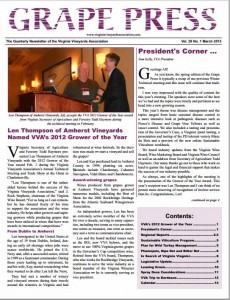 very generous with us, giving hours of their time to assist in our education. Early on, for example, I posted a note to a web site for the Central Virginia Winemakers group asking a question about how much time I should expect to set aside to manage a small vineyard I got lots of responses, and two of the folks who replied to my query hosted us at their vineyard for what amounted to a seminar on growing grapes.
very generous with us, giving hours of their time to assist in our education. Early on, for example, I posted a note to a web site for the Central Virginia Winemakers group asking a question about how much time I should expect to set aside to manage a small vineyard I got lots of responses, and two of the folks who replied to my query hosted us at their vineyard for what amounted to a seminar on growing grapes.
Secondly, we’re big fans of Virginia wine. We attended our first Virginia wine festival some 25 years ago, and while the wines weren’t great back then, some were pretty good, and we thought they all had promise. We were right. The wines got better each year, and today, we think Virginia wines have really come into their own. Virginia Viognier is a world-class wine. Cab Franc, Merlot, Petit Verdot, Petit Manseng, Norton and a number of other grape varieties have been made into truly great wines. My personal view is that a number of the Commonwealth’s wineries are making wines that can compete anywhere in the world, and their ranks are growing each year.
A major reason for the continued improvement in Virginia wine is the quality of the fruit that wineries have to work with. As the old saying goes, wine is made in the vineyard. And the quality of the fruit is improving in no small part because of the willingness of so many in the business to help each other out. In this industry, people share knowledge. Grape Press is part of that process, and the Vineyard Goddess and I are thrilled to be able to play a part, however small, in the continued growth of the Virginia wine industry
As I said, we can’t take credit for the range of high-quality stories in the current edition, but we did have a chance to work with the authors, and it was one of the best journalistic experiences of my life. The writers were all involved in one aspect or another of viticulture, from the distinguished vineyard consultant Lucie Morton to grape pathologist Mizuho Nita to Ankida Ridge vineyard owner Christine Vrooman.
The writers were knowledgeable and intelligent, and their articles were infused with personality and wit, which made them a pleasure to read. I won’t try to mention everything from this issue, but Christine Vrooman’s series on sustainability, Andrew Hodson’s article comparing French and Virginia Viognier, and Jim Benefiel’s story on a VVA expedition to Bordeaux are among those I would recommend to anyone. And honestly, there isn’t a bad article in the whole issue. Bill Freitag, Katie Hellebush, Pete Johns, Lucie Morton, Mizuho Nita and Dean Triplett contributed excellent articles, and they’re all worth a read. For what it’s worth, I read the entire issue, word for word, at least twice, and I enjoyed it as much on the final read as I did on the first round of edits.
Membership in the Virginia Vineyards Association is a must for anyone involved in the Virginia wine industry. But Grape Press is great resource for anyone interested in viticulture, no matter where you live. It’s a great publication, and Chris (the Vineyard Goddess) and I will be doing our very best to ensure hat it continues to be great.
Looking Back on the First Year
So, now that we’ve been through most of a full season, from preparing the ground and putting in the trellis, to planting and nurturing the vines all the way through the “harvest” (three clusters that grew despite our efforts to keep the vines free of fruit), I think it’s time to enjoy a glass of someone else’s wine, reminisce happily about how well everything turned out, and then get down to the serious business of evaluating what we did right and what we did wrong. On the plus side, I think we got a lot of things right. We spent more time than I care to remember researching and thinking through what varietals we would plant and more specifically, what clones would do best on our property – 740-feet above sea level, on a steep, westward facing slope in Afton. We settled on four grapes – Cab Franc, Petit Verdot, Viognier and Petit Manseng – and I’m very happy with the choices we made. We’re thinking of putting in some Merlot next spring, but I think the four we started with are great grapes for Virginia.
- My job was to dig the holes. . .
- In a more or less straight line.
- And my wife, the Vineyard Goddess, did most of the planting.
We decided to go with ENTAV clones, and worked through three different nurseries to get the vines we wanted. For the record, we ended up getting ENTAV 214 Cab Franc; ENTAV 573 Petit Manseng; ENTAV 400 Petit Verdot; and ENAV 642 Viognier. We put all of them on 101-14 rootstock. Continue Reading–>
An Hour of Frost
Well, it doesn’t take much. The forecast called for temperatures in my part of Fairfax County to dip below freezing for less than two hours, but that was enough to do some damage. At least one of the vines appears to have sailed through the night with flying colors, but the others experienced at least some degree of frost damage. As noted in my
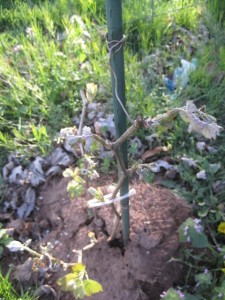
- Some damage on this vine – it’s hard to see in this picture, but compare the shriveled leaves on the right with the green, healthy ones on the left side.
previous post, this is a critical time of the year for vines. Late frost is a threat in any year, but the early bud break this spring left vines everywhere in the state exposed to the threat of frost in the weeks ahead.
As WineMaker magazine noted, late frost is a danger “because the first green growth produced on a new grapevine shoot is two or three basal leaves, immediately followed by the embryonic flower clusters that will become this year’s crop. So, if frost strikes, it can greatly reduce or even wipe out the whole vintage.”
For my vines in Fairfax, I believe the danger is even more acute because they are still small and the buds are so close to the ground, where the temperature is coldest. We’re still new at this, and it’s possible we pruned them back too far over the winter. For the vines we plant this spring, we’ll definitely be focused on strategies for dealing with late frost, and I’ll talk about some of them in an upcoming post.
Of course, one of the most important considerations in dealing with frost is site selection, and we’ve already cast that particular die. The Fairfax vineyard is challenged on at least two counts. It’s at a low elevation, and it’s on flat ground, so the cold air has no place to go. In Nelson County, where we have some vines planted and are preparing to plant another 150, the elevation is higher, around 750 feet, but not high enough to put us in the atmospheric sweet spot that probably runs from about 800 to 1,600 feet above sea level. On the other hand, the land is sloped, so the heavier cold air should flow down hill and off the vineyard. We’ll see.
But no matter how well you plan, you may still find yourself dealing with late frost. I suspect most commercial vineyards in the state were monitoring the vines throughout the night and taking steps to mitigate the frost threat. Larger vineyards have a number of tools they can bring to bear, including wind machines, heaters, and helicopters. Many vineyards gather the wood pruned from the vines over the winter and leave it at the end of the rows to burn on nights where frost threatens.
This year, we didn’t have a lot of choices beyond praying and hoping. However, the Fairfax vineyard is only experimental; I’m not expecting to ever make wine from those grapes, although it would be a definite bonus if I do. But for the vines we are putting in the ground this Spring, we’ll probably have some sleepless spring nights in our future.
Building the Trellis, Part I
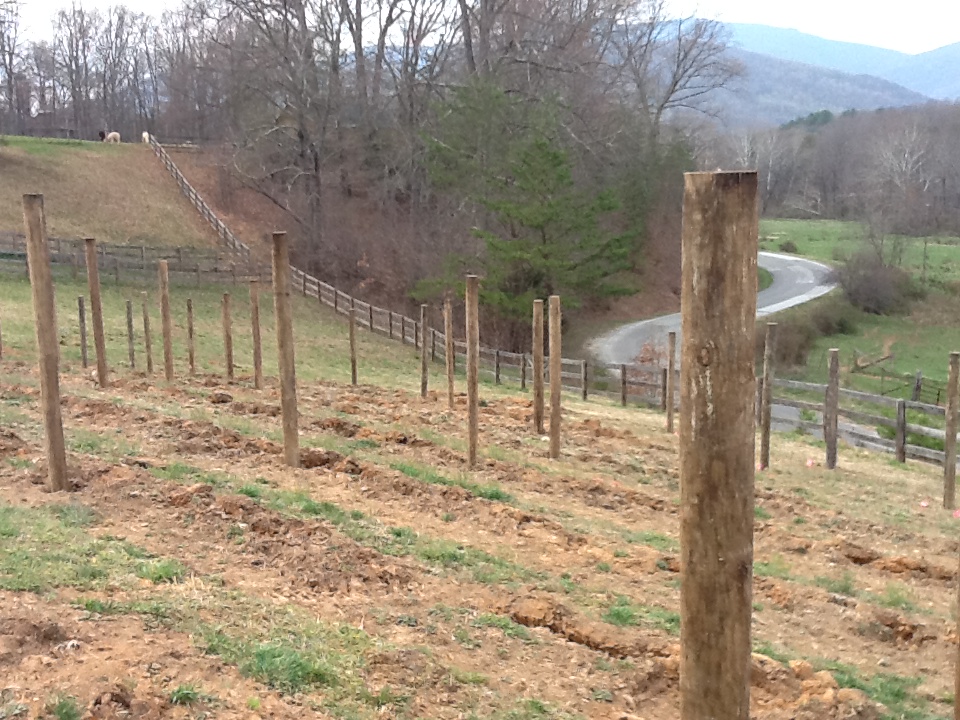
Here's how the vineyard looked last weekend, March 17. The posts are in the ground, the rows have been ripped, and it's beginning to look like a real vineyard! You can see our neighbors, the Alpacas, on the hill, top left.
How we built the trellis
Well, I have to be honest, I didn’t exactly build it myself. Much as I wanted to install the posts with my own hands, I ended up short on time with the planting season upon us. We needed to get the vines in the ground, pronto.
I’d spent much of the winter, between viticulture classes, my job and all of the work that goes into maintaining two separate properties, thinking about how to handle the trellis. There were moments when it seemed simple enough — eight foot posts put 24 to 30 inches into the ground, plus some kind of end-post system, which would be only slightly more complicated. And then, there were times when I wondered if I was up to the job.
As part of the planning, I did some research on what kind of equipment I’d need to buy or rent. A lot of the literature suggests that the best way to put posts into the ground is to pound them in, but the equipment involved would have made that impractical for me to do on my own. The easiest way to get the posts in is to drill the holes with an auger.
So, I briefly considered the idea of a hand-held power auger, which was the least expensive approach, or an auger for my tractor. I spent a lot of time visualizing the process, and considering whether it would be more cost-effective to do it myself or hire someone to do the work. I was pretty confident I could get the line posts in without a problem, but I spent a lot more time worrying about the end posts, which are more complicated. At some point, I began waking up at 4 a.m. to worry about how much work needed to be done and wonder if the vines we had ordered were destined to just, uh, rot on the vine? No, bad metaphor. Go to seed? mmmm…. no, that doesn’t work either. Wither and die? Well, something like that.
Eventually, we passed the point where I could reasonably expect that it would be Continue Reading–>
Every Grape is Different — Notes from a Vineyard Conference
The Virginia Vineyards Association brings together commercial grape growers, hobbyists and others with an interest in viticulture, and its efforts to promote cooperation and the exchange of information is one of the reasons that the Commonwealth’s wine gets better every year. I believe, and I think most of the growers who participated in the association’s technical meeting in Charlottesville last week would agree, that the reputation of Virginia wine is influenced by every bottle that’s sold. If someone has a bad experience the first time they taste a Virginia wine, they may never try another. So all of us have a vested interest in doing what we can to help each other make the best wine possible.
Another reason for the success of the Virginia wine industry is the work that’s being done at Virginia Tech by folks like Tony Wolf, Bruce Zoecklein, and Mizuho Nita, all of whom played major roles at the meeting. Tony Wolf’s book, Wine Grape Production Guide for Eastern North America, has become our bible as we move toward planting a small hobby vineyard, and Mizuho Nita’s blog is the indispensible guide to grape disease management.
However, this was my first encounter with Dr. Zoecklein, and I’m hopeful now that it won’t be my last. Dr. Zoecklein has written the book (actually, at least four books and too many articles to count) on wine chemistry, and he manages to make the chemistry both accessible and practical for people like me. And since this was a class on “Sensory Evaluation for Grape Growers,” he taught the class through the tastes and aromas of seven separate wines, which we tasted blind throughout the class. Continue Reading–>
The Year of the Sorting Table
Following up on my last blog, which concerned Cab Franc, Tim Mondavi, and the 2011 vintage in Virginia, among other things, I just read Emily Pelton’s article on the 2011 harvest in Grape Press, the publication of the Virginia Vineyards Association, and I am somewhat more hopeful about this vintage.
First, some introductions. Emily Pelton is the winemaker extraordinaire at her family’s
vineyard in Nelson County, Veritas Vineyard and Winery. And the Virginia Vineyards Association is the indispensable organization for anyone in the Commonwealth interested in viticulture and winemaking. The November issue of the Grape Press was one of the best I've read. In fact, I think I read every word, from beginning to end, and it was all good.
In any event, I spent part of my last post lamenting the difficult weather conditions, particularly the abundant rain that created all kinds of problems in the vineyard. One of the difficult decisions that winemakers and vineyard managers make as harvest approaches is how willinging they are to gamble on the weather. If rain is in the forecast, do you hold out a little longer, hoping the grapes will achieve the perfect balance of sugar and acidity, or do you pick early, sacrificing a bit of brix for the certainty that you will at least have a harvest? Continue Reading–>
A night in the Vineyard — with Snow
Before explaing why we found outselves in the vineyard late last night with the snow coming down, let me give you a little background, which hopefully will assure you that we are not crazy. Not completely, anyhow.
In my last post, I talked about the importance of weather in vineyard management. Obviously weather is a factor in all things agricultural – there’s not a farmer in the world who doesn’t keep at least one eye on the sky throughout the growing season – but it raises very specific and difficult issues when it comes to viticulture. Vines, after all, aren’t annual crops. It takes three or more years to bring vines to the point where a crop can be harvested, and they can be be expected to bear fruit for decades after that, which means they must be nurtured through hot, humid summers and cold winters.
I also talked about the importance of site selection in my last post, and it turns out that many of the issues in selecting a vineyard property boil down to coping with weather.
For example, a late frost can cost you an entire growing season. No grapes, no wine, and (if this is your business), no money – although you’ll still have to undergo the expense of caring for the vines throughout the growing season And a serious winter freeze – one in which temperatures drop well below zero – can cost you the entire vineyard. That’s why wine-grape growers in Virginia look for property with an appropriate elevation. In much of the area east of the Blue Ridge Mountains, elevations above 800 feet are highly desirable, since they bring you into a sweet spot of a thermocline where warmer air is trapped. Optimal elevations, those within a thermal belt or thermocline, vary by region. In our area (the Monticello AVA), I believe that elevations of 800 to 1500 feet above sea level (ASL) are optimal. Any higher or lower and you risk problems from frosts and freezes. Continue Reading–>
Bringing in the Grapes – Part II
Since we don’t have grapes of our own to harvest this year, we did the next best thing, and took a class at Piedmont Virginia Community College on “Harvesting and Basic Analysis of the Must,” taught by the incomparable Gabriele Rausse.
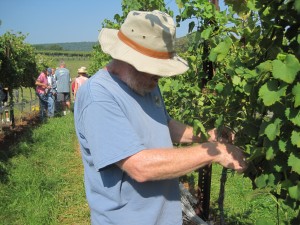
- Each grape is precious – I don’t want to send bad fruit to the crush pad, but I don’t want to waste good fruit either.
After a brief classroom lecture, we moved on to Blenheim Vineyards, where we helped (help being a relative term) pick one section of Viognier grapes. I went into this assuming that picking grapes might be the one thing about viticulture that would be so straightforward, so foolproof – SO SIMPLE! – that we could just do it, without staring at the vines, paralyzed with fear, before asking for help.
Well, no such luck.
For this particular section of the vineyard, Blenheim was “sorting in the vineyard,” which is to say, we were dropping grapes that had succumbed to disease or sour rot, or were otherwise not suitable for pressing. Most often, you bring the grapes in and sort at the crushpad, separating out the fruit that doesn’t belong in the must, and getting rid of MOG – matter other than grapes. (You’d be surprised at how many spiders make their way to the crushpad. )
This has been an exceptionally difficult year for Virginia vineyards, and Blenheim didn’t want to take a chance on letting bad fruit infect the good back at the winery. So, in addition to sorting at the crushpad, Blenheim left bad fruit on the ground in the vineyard. Continue Reading–>

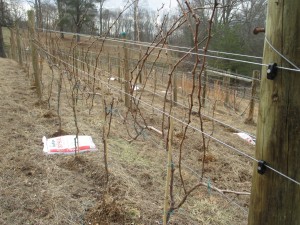
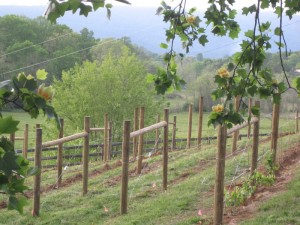
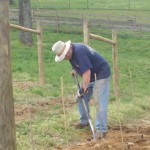
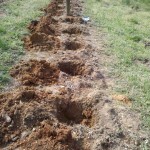
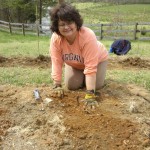
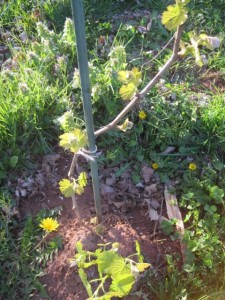
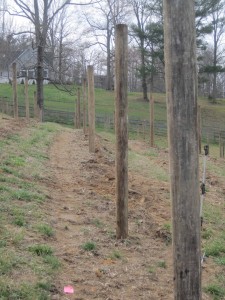

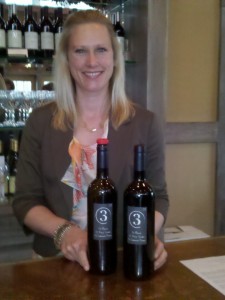
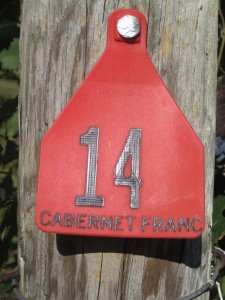
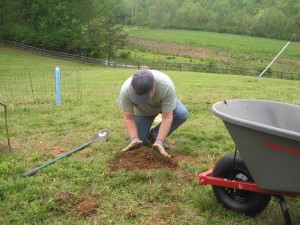



Recent Comments